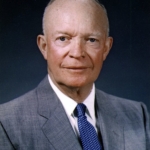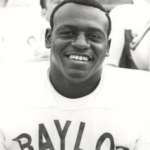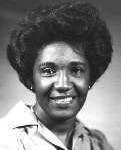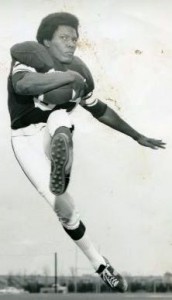Harris County Takes Steps To Face A History Of Racial Lynchings
A national movement to commemorate lynching victims could come to the Houston area and recognize four black men who were killed here.
Photo: Located at 1115 Congress Street, Quebedeaux Park — proposed site for lynching markers — sits right across from the Harris County Courthouse. (Macie Kelly/Houston Public Media)
(Houston Public Media) When Debra Blacklock-Sloan took a bus to Montgomery, Alabama to visit the country’s first museum about slavery and lynching, she was overwhelmed by what she saw. Giant rails hung from the ceiling inside the Legacy Museum. Each one bore the names of lynching victims from counties across the United States. One included the names of four black men who were shot, burned to death or hung in Harris County.
Seeing the memorials, Blacklock-Sloan, a Houston historian, immediately started to cry.
“I just got so emotional,” she said. “Several times I had to step out and compose myself just thinking about the weight of this museum, of what it evokes and what it means. It’s so terribly important that people visit the site.”
A friend who traveled with her was so overcome by emotion she couldn’t get off the bus; the horrific history hit too close to home. One of her relatives had been lynched.
Replicas of this memorial could soon come to Houston, as historians like Blacklock-Sloan, elected officials and others push to recognize and rethink racial history in Texas and the United States. (more)
Meet the woman behind new distillery honouring black slave who taught Jack Daniel how to make whiskey

Fawn Weaver is behind new distillery honouring black slave who taught Jack Daniel how to make whiskey. (Pic credit: Master of Malt)
(Face2Face Africa) The contributions of black people to America’s history across various fields have, over the years, been largely forgotten and this is also evident in the spirits industry.
The story of how Jack Daniel began his distillery through the help of an enslaved African-American, Nearest Green, recently came to light. Jack Daniel was apprenticed in his youth to a Tennessee-based Lutheran preacher, grocer, and distiller named Dan Call.
Green was a master distiller who was also owned by Call. Green would go on to teach Jack Daniel everything he knew about the art of distillation and the operation of a whiskey still.
Green’s story is now gaining more traction as one woman, Fawn Weaver, is all set to open a new whiskey distillery this month in honour of Green’s legacy. (more)
Most slave shipwrecks have been overlooked—until now
400 years after slavery began in the United States, black scuba divers are searching for ships that carried enslaved Africans to the Americas.

Diving With a Purpose lead instructor Kamau Sadiki hovers over and examines part of a wreck in the Florida Keys. (Photograph by Chris Searles)
(National Geographic) No one ever asked the free Africans if they wanted to leave their homeland. They were stolen, shackled, crammed head-to-toe in European slave ships, traded for goods or sold outright. Such was the intended fate for Africans aboard Portugal’s São José Paquete de Africa when it sailed from Mozambique in 1794 destined for Brazil. When the ship became wedged between two coral reefs off the coast of Cape Town, South Africa it broke in half, and turbulent waves killed 212 of the 512 African captives on board.
“Before I even got to it, I began to sort of get goosebumps getting a sense of the tragedy.” says Kamau Sadiki, a lead instructor for Diving With a Purpose, the maritime archaeology program whose divers search for slave wrecks and helped with the discovery and verification of the São José. “I could feel the vibration, the energy, and the pain, and the suffering and the horror,” says Sadiki, who was part of the São José research dive team. (more)
TIPHC Bookshelf
 Published scholarship on black history in Texas is growing and we’d like to share with you some suggested readings, both current and past, from some of the preeminent history scholars in Texas and beyond. We invite you to take a look at our bookshelf page – including a featured selection – and check back as the list grows. A different selection will be featured each week. We welcome suggestions and reviews. This week, we offer, “Earl Campbell, Yards after Contact,” by Asher Price.
Published scholarship on black history in Texas is growing and we’d like to share with you some suggested readings, both current and past, from some of the preeminent history scholars in Texas and beyond. We invite you to take a look at our bookshelf page – including a featured selection – and check back as the list grows. A different selection will be featured each week. We welcome suggestions and reviews. This week, we offer, “Earl Campbell, Yards after Contact,” by Asher Price.
Earl Campbell was a force in American football, winning a state championship in high school, rushing his way to a Heisman trophy for the University of Texas, and earning MVP as he took the Houston Oilers to the brink of the Super Bowl. An exhilarating blend of biography and history, Earl Campbell chronicles the challenges and sacrifices one supremely gifted athlete faced in his journey to the Hall of Fame. The story begins in Tyler, Texas, and features his indomitable mother, a crusading judge, and a newly integrated high school, then moves to Austin, home of the University of Texas (infamously, the last all-white national champion in college football), where legendary coach Darrell Royal stakes his legacy on recruiting Campbell. Later, in booming, Luv-Ya-Blue Houston, Campbell reaches his peak with beloved coach Bum Phillips, who celebrates his star runner’s bruising style even as it takes its toll on Campbell’s body.
Drawing on new interviews and research, Asher Price reveals how a naturally reticent kid from the country who never sought the spotlight struggled with complex issues of race and health. In an age when concussion revelations and player protest against racial injustice rock the NFL, Campbell’s life is a timely story of hard-earned success—and heart-wrenching sacrifice.
This Week in Texas Black History
Sept. 9
 On this date in 1957, President Dwight D. Eisenhower signed into law the Civil Rights Act of 1957. Originally proposed by Attorney General Herbert Brownell, the Act marked the first occasion since Reconstruction that the federal government undertook significant legislative action to protect civil rights. Although influential southern congressman whittled down the bill’s initial scope, it still included a number of important provisions for the protection of voting rights. It established the Civil Rights Division in the Justice Department, and empowered federal officials to prosecute individuals that conspired to deny or abridge another citizen’s right to vote. Moreover, it also created a six-member U.S. Civil Rights Commission charged with investigating allegations of voter infringement. But, perhaps most importantly, the Civil Rights Act of 1957 signaled a growing federal commitment to the cause of civil rights.
On this date in 1957, President Dwight D. Eisenhower signed into law the Civil Rights Act of 1957. Originally proposed by Attorney General Herbert Brownell, the Act marked the first occasion since Reconstruction that the federal government undertook significant legislative action to protect civil rights. Although influential southern congressman whittled down the bill’s initial scope, it still included a number of important provisions for the protection of voting rights. It established the Civil Rights Division in the Justice Department, and empowered federal officials to prosecute individuals that conspired to deny or abridge another citizen’s right to vote. Moreover, it also created a six-member U.S. Civil Rights Commission charged with investigating allegations of voter infringement. But, perhaps most importantly, the Civil Rights Act of 1957 signaled a growing federal commitment to the cause of civil rights.
Sept. 10
 John Westbrook, a running back for Baylor University, became the first black player to compete in the Southwest Conference when he entered a game against Syracuse in the fourth quarter on this day in 1966. His debut came one week before the more celebrated start for Southern Methodist University’s Jerry LeVias.
John Westbrook, a running back for Baylor University, became the first black player to compete in the Southwest Conference when he entered a game against Syracuse in the fourth quarter on this day in 1966. His debut came one week before the more celebrated start for Southern Methodist University’s Jerry LeVias.
Sept. 12
 On this date in 1977, Azie Taylor Morton of St. John Colony in Dale, Texas becomes the first African-American appointed to the office of Treasurer of the United States. Tabbed by President Jimmy Carter, Morton is the only black to ever hold that post. As a child, Taylor worked in cotton fields, but was an outstanding student and entered Huston-Tillotson College at age 16, graduating cum laude in 1956 with a degree in commercial education. She served as Treasurer until January 20, 1981.
On this date in 1977, Azie Taylor Morton of St. John Colony in Dale, Texas becomes the first African-American appointed to the office of Treasurer of the United States. Tabbed by President Jimmy Carter, Morton is the only black to ever hold that post. As a child, Taylor worked in cotton fields, but was an outstanding student and entered Huston-Tillotson College at age 16, graduating cum laude in 1956 with a degree in commercial education. She served as Treasurer until January 20, 1981.
Sept. 12
 In 1970, wide receiver Hugh McElroy of Houston (Worthing HS) became the first African-American to start a game for the Texas A&M football team. The next week, at LSU, he became A&M’s first black player to score a touchdown when he caught a short pass from quarterback Lex James for the winning touchdown with 13 seconds left in the game giving the Aggies a 20-18 upset.
In 1970, wide receiver Hugh McElroy of Houston (Worthing HS) became the first African-American to start a game for the Texas A&M football team. The next week, at LSU, he became A&M’s first black player to score a touchdown when he caught a short pass from quarterback Lex James for the winning touchdown with 13 seconds left in the game giving the Aggies a 20-18 upset.
Sept. 12
Singer and composer Barry White was born on this date in 1944 in Galveston, but was raised in Los Angeles, where he began his musical career at age 11 playing piano (self-taught) on the Jesse Belvin hit, “Goodnight My Love.” White also made several records during the early 60s, under the name “Barry Lee.” In 1969, he put together “Love Unlimited,” a successful female vocal trio. A five-time Grammy winner, his gravelly, seductive, bass voice also earned him 106 gold and 41 platinum albums, 20 gold and 10 platinum singles, with worldwide sales in excess of 100 million.
Sept. 13
Olympic sprint gold medalist Michael Johnson was born on this day in Dallas in 1967. Johnson graduated from Baylor University in 1990 with a marketing degree. As an Olympian, he won 18 gold medals combined in the 200- and 400-meter events and was national champion in those events eight times. at the 1996 Olympics where he became the first man to ever win gold at 200 meters and 400 meters at the same Olympics.
Sept. 14
In 2004, San Antonio native Wallace Jefferson became the first African American Chief Justice of the Supreme Court of Texas when he was appointed to the post by Gov. Rick Perry. The University of Texas School of Law honored Chief Justice Jefferson with its Outstanding Alumnus Award in 2005. He is the descendant of a slave who was owned by a Waco judge before the Civil War. That slave, Shedrick Willis, served his community as a two-term member of the Waco City Council after the War.
Blog: Ron Goodwin, Ph.D., author, PVAMU history professor
Ron Goodwin is an assistant professor of history at Prairie View A&M University. Even though he was a military “brat,” he still considers San Antonio home. Like his father and brother, Ron joined the U.S. Air Force and while enlisted received his undergraduate degree from Texas Lutheran University in Seguin, Texas. After his honorable discharge, he completed graduate degrees from Texas Southern University. Goodwin’s book, Blacks in Houston, is a pictorial history of Houston’s black community. His most recent book, Remembering the Days of Sorrow, examines the institution of slavery in Texas from the perspective of the New Deal’s Slave Narratives.
Recent Posts
The beginning of the end: D-Day
In June 1944, Allied forces began their assault not only on the beaches of Normandy, but on Nazism itself. Dubbed Operation Overlord, the amphibious exercise is legendary as the extraction of France from German control and the beginning of the end of Adolph Hitler’s plans for a thousand year reign of his Aryan master race. The death tolls were staggering on the initial day of the operation. Thousands of Americans gave the greatest sacrifice in…(more)
Hidden In Plain Sight
In 1903, W.E.B. Du Bois wrote The Souls of Black Folk in which he claimed: “the problem of the Twentieth Century is the problem of the color-line.” That was 1903. American society is in the last year of the second decade of the twenty-first century, and I wonder if that famous quote still applies. In 1903, Jim Crow dominated every aspect of American life and forced the black community into the shadows. Du Bois used”…(more)
Submissions wanted
Historians, scholars, students, lend us your…writings. Help us produce the most comprehensive documentation ever undertaken for the African American experience in Texas. We encourage you to contribute items about people, places, events, issues, politics/legislation, sports, entertainment, religion, etc., as general entries or essays. Our documentation is wide-ranging and diverse, and you may research and write about the subject of your interest or, to start, please consult our list of suggested biographical entries and see submission guidelines. However, all topics must be approved by TIPHC editors before beginning your research/writing.
We welcome your questions or comments. Please contact Michael Hurd, Director of TIPHC, at mdhurd@pvamu.edu.



